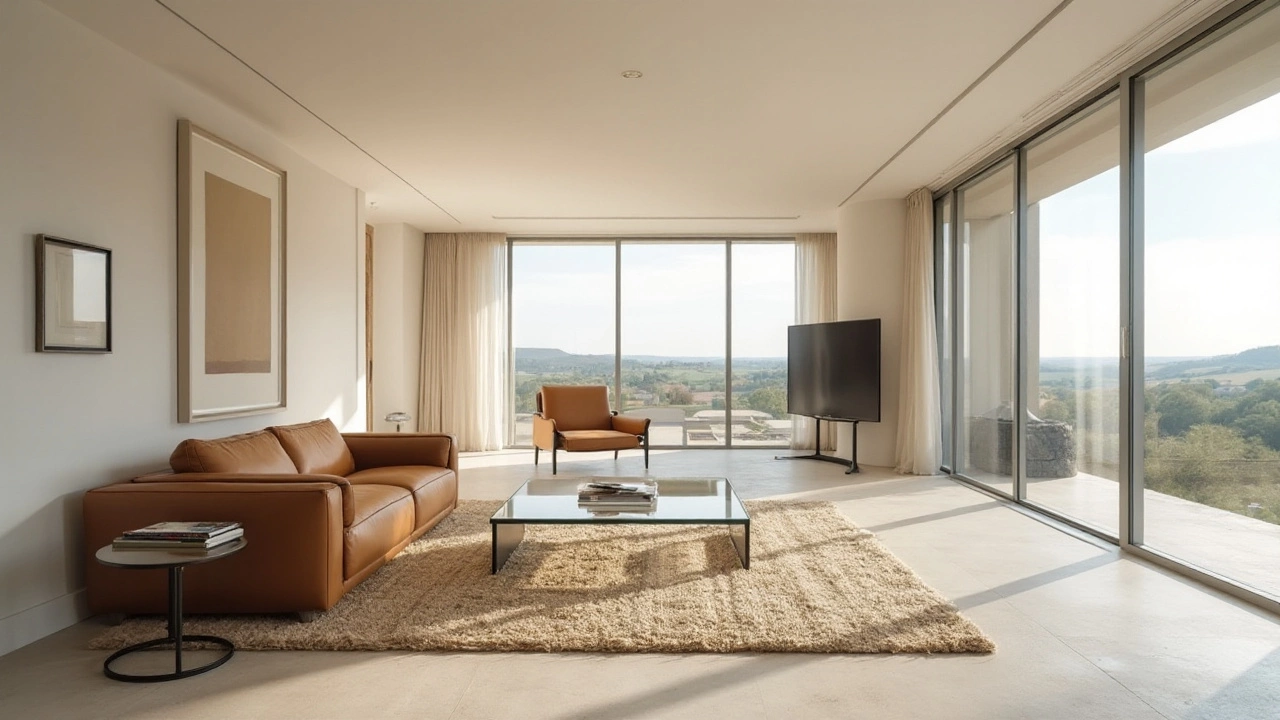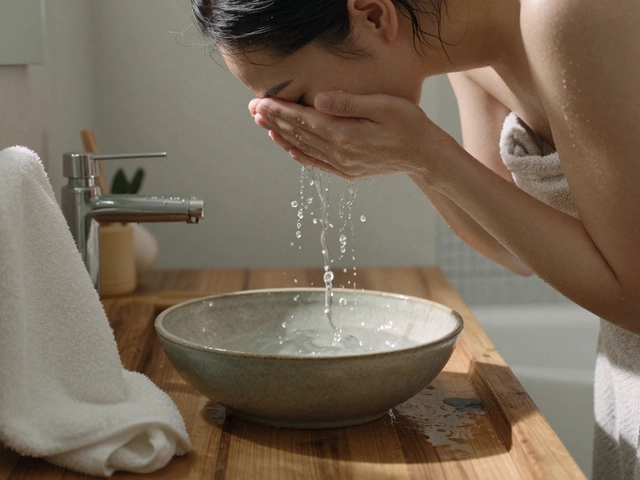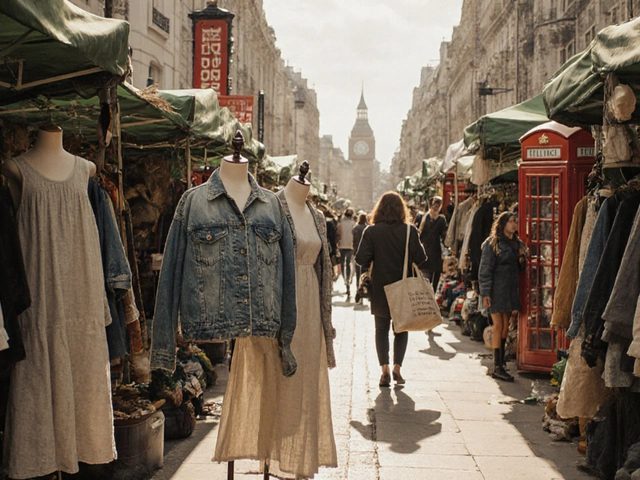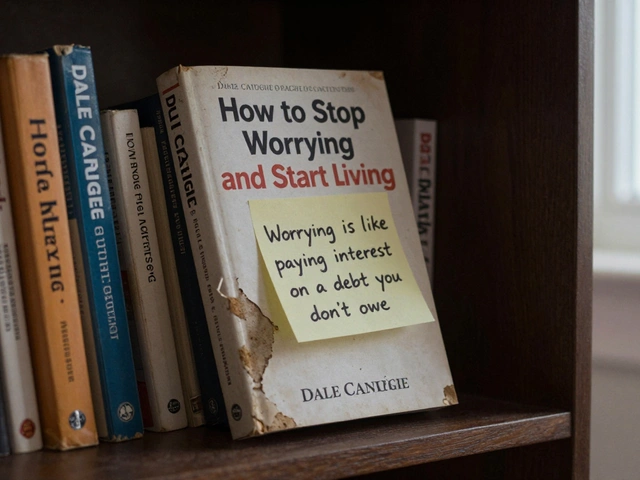Luxury minimalism might sound like a paradox at first. How can something luxurious be minimalist? Yet, this lifestyle is gaining traction, blending aesthetics and intentional living in an intriguing way. It is about paring down to the essentials, but ensuring those essentials are of superb quality and design.
By choosing fewer, more exquisite items, individuals create spaces that reflect elegance and sophistication without excess clutter.
This path celebrates both beauty and practicality, offering an enriching experience to its followers. It’s more than just a style statement; it's a way of being that appreciates the finer things in life without overwhelming the senses or the space.
- Defining Luxury Minimalism
- History and Evolution
- Principles and Practices
- Benefits of Living Luxuriously Minimal
- Tips to Adopt Luxury Minimalism
Defining Luxury Minimalism
Luxury minimalism is a refined approach combining the core values of minimalism with the allure of luxury. It goes beyond simply having fewer possessions; it's about selecting items that resonate with quality, timelessness, and personal connection. At its heart, luxury minimalism encourages people to prioritize experiences over material goods, often selecting items with a story or craftsmanship that reflects human artistry. The philosophy does not merely advocate for less; it advocates for the incorporation of pieces that enrich one’s environment with their presence, striking the right balance between emptiness and elegance.
One pivotal aspect of this lifestyle is its focus on sustainability and ethical consumption. Many adherents choose handcrafted or ethically sourced goods, preferring to invest in brands that uphold values such as fair trade and eco-friendly production. This conscious decision-making process emphasizes the journey that each piece has taken to reach them, connecting them not only to the item but to the world around it. In the era of fast fashion and disposable culture, luxury minimalism offers a refreshing return to thoughtful consumption.
Dominique Browning, a former editor of House & Garden, observed, "Luxury today is having the time to enjoy the simplicity of existence. The richness is in the stories behind what we own."
Embracing luxury minimalism also requires a deep understanding of one's personal aesthetic. Everyone's version of luxury can differ vastly; for some, it could be a beautifully crafted armchair, while for others, it might be a high-quality set of linens. The key is to choose objects that speak to one's senses and comfort, providing a serene backdrop to daily life. The transformation towards this lifestyle often begins with assessing and reflecting on what truly brings joy and purpose into one’s space.
A common myth about this lifestyle is that it is inaccessible or reserved only for the wealthy. However, luxury minimalism is less about the price tag and more about the intrinsic value of what one chooses to keep. By shifting focus away from the quantity or status symbol of items, individuals can discover true luxury in curated spaces filled with intention. The transformation is internal as much as external, paving the way for a clearer mind and surroundings.
In summary, luxury minimalism is a dynamic interplay between aesthetics and authenticity, encouraging a life enriched by fewer, better things. Whether it's the elevated simplicity of a finely designed chair or the visual tranquility of an uncluttered room, each choice reflects a deliberate curation. This lifestyle ultimately champions a more meaningful engagement with our possessions and a more sustainable way of living.
History and Evolution
The journey of minimalism as an art and lifestyle movement is fascinating, reflecting society's changing values and aspirations over the decades. The roots of minimalism can be traced back to the minimalist art movement of the 1960s, where artists like Donald Judd and Carl Andre sought to create art stripped down to its most essential forms. This philosophy soon permeated other areas, including architecture and design, with icons like Ludwig Mies van der Rohe, who famously advocated that 'less is more.'
As we move towards the late 20th century, minimalism became not just an aesthetic choice but resonated as a lifestyle for many. In an increasingly fast-paced and cluttered world, people began craving simplicity and clarity in their surroundings. The 1990s and early 2000s saw a shift towards sustainable living, where choices were driven by both aesthetic minimalism and environmental concerns. The global recession of 2008 further fueled this trend by making people more conscious of their spending and the importance of investing in fewer, but higher quality, goods.
The fusion of luxury with minimalism emerged as a natural progression. As people sought to simplify, there was also a desire for items that were not only functional but beautifully crafted. The term 'luxury minimalism' began to take shape, embodying a lifestyle choice that values the craftsmanship and story behind objects rather than sheer abundance. This evolution speaks to the human desire for fulfillment that feeds the soul rather than just accumulating possessions without purpose.
Perhaps it’s not surprising that today's digital age, with its relentless flow of information and endless choice, has seen many gravitate towards the calm and clarity of minimalism. As a response, the philosophy of luxury minimalism holds particular appeal for those looking to blend sophistication with simplicity. A quote by Marie Kondo reflects this sentiment:
'The question of what you want to own is actually the question of how you want to live your life.'
The modern take on luxury minimalism often involves a thoughtful curation of one’s environment that balances function with beauty, creating homes prized not just for their aesthetic appeal but the tranquility they provide. Brands, too, have embraced this movement by simplifying their offerings and focusing on designs that speak to this duality. A notable example could be seen in fashion, where designers distill their collections to timeless pieces that eschew seasonal trends. By doing so, they cater to those who seek to invest in pieces that transcend time.
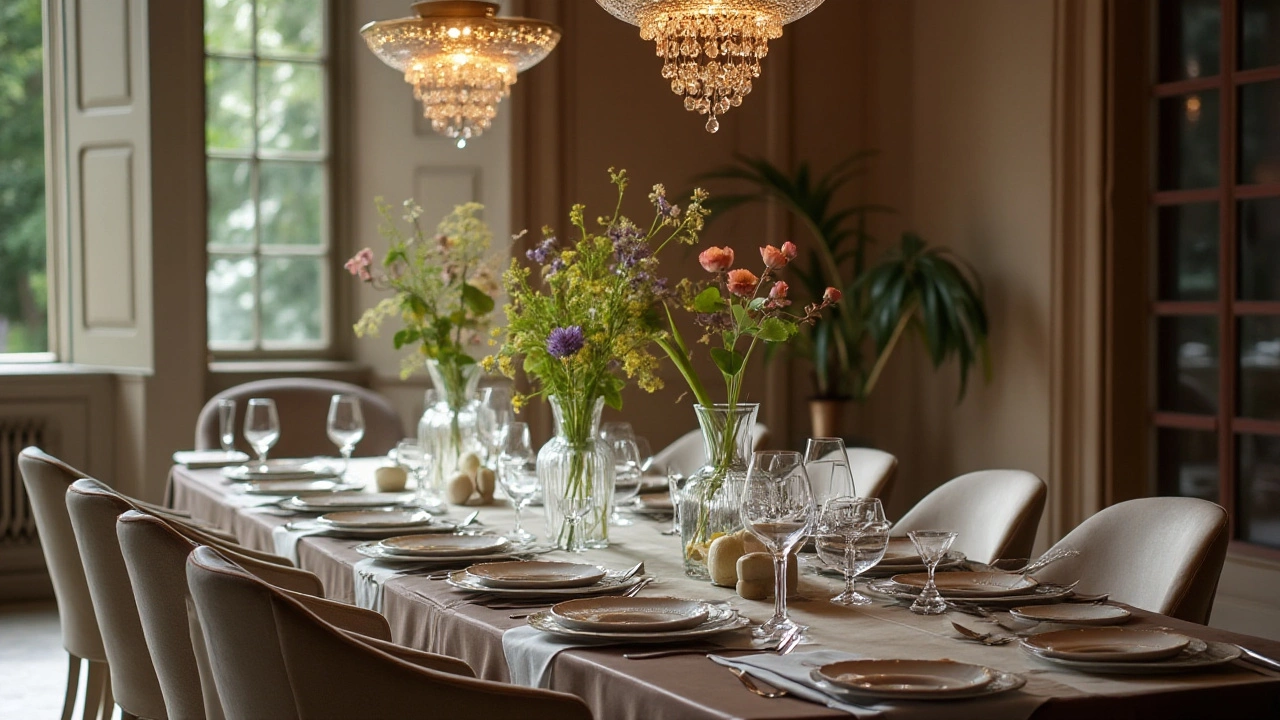
Principles and Practices
The philosophy of minimalism is deeply rooted in the idea that less is more, and when blended with the notion of luxury, it ascends to an art form focused on quality and purpose. At its core, luxury minimalism emphasizes the acquisition of fewer but superior objects, where each item in a space is intentional and serves a meaningful purpose. The guiding principle here is not to deprive oneself of possessions but to choose items that enhance the experience of living and exude a timeless elegance.
One of the key practices involved in adopting this lifestyle is the emphasis on craftsmanship and materials of the highest caliber. Items chosen should not only be pleasing to the eye, but also stand the test of time, both in terms of durability and style. An interesting fact is that this style draws heavily from the Japanese concept of 'Ma,' which refers to the negative space guaranteed by purposely not filling the environment to its brim, allowing each element to shine on its own.
Another essential principle is sustainability. In a world where mass production is commonplace, luxury minimalism encourages a step back from fast-paced consumerism, advocating for conscious purchasing decisions. Sarah Richardson, an acclaimed interior designer, once stated,
'It is not about having a lot of stuff; it’s about having the right stuff.'This quote encapsulates the idea of being mindful of choices, focusing on items with lasting impact rather than temporary trends, thus reducing waste and promoting sustainable living practices.
The practice of meticulous curation extends beyond physical objects to include experiences and relationships, highlighting a holistic approach to life. Decluttering becomes an exercise not only for the home but also for one’s personal life, urging individuals to spend time, energy, and resources on things and people that truly matter. Within this practice, the minimalist is encouraged to periodically reassess and declutter, ensuring everything that remains continues to bring joy and purpose.
To successfully integrate these principles and practices, start by evaluating the spaces around you. Identify objects with emotional or practical significance, removing items that no longer align with your personal values or aesthetic. Gradually, adopt a deliberate approach when acquiring new items, prioritizing those that align with the principles of minimalism in their design, purpose, and contribution to sustainability. As you refine this practice, you'll likely find that your living space becomes a sanctuary, stripped bare of distractions and filled only with treasures that enrich your life.
Benefits of Living Luxuriously Minimal
Embracing a minimalist lifestyle with a touch of luxury offers a remarkable blend of tranquility and sophistication. One of the most immediate benefits is the creation of serene spaces that promote a sense of calm and focus. When surrounded by fewer things, each chosen for its beauty and function, there is less visual noise, allowing occupants to enjoy and engage with their environment more meaningfully. This approach doesn't just clear physical spaces; it clears mental headspace too, reducing stress and improving clarity.
A thoughtfully curated environment fosters an appreciation for craftsmanship and quality, aspects often central to a luxury lifestyle. By investing in fewer, high-quality items, you often find these possessions last longer, thereby enhancing sustainability. This can contribute to a reduced carbon footprint, aligning with the growing desire for environmentally-conscious living. Importantly, the process of selecting these pieces nurtures a mindful attitude towards consumption, encouraging individuals to evaluate their true needs versus wants.
"Minimalism is not a lack of something. It’s simply the perfect amount of something." — Nicholas Burroughs
Another significant advantage is financial. Although it might appear counterintuitive, over time, spending on fewer but higher quality, such as genuine leather, precious metals, or artisanal items, can actually save money. These items typically withstand the test of time and trends, negating the need for frequent replacements or updates. This financial prudence allows for more deliberate investments in experiences that matter, adding a rich texture to life that material goods simply cannot.
Moreover, minimalism can enhance personal and cultural engagement. Without the distraction of excess belongings, one often finds more time and energy to dedicate to pursuits and hobbies. Pursuits might include arts, music, cooking, or travel, all of which enrich life experiences. Such a lifestyle also fosters deeper appreciation for cultural aesthetics, as often reflected in luxurious minimalist design, borrowing from Japanese and Scandinavian traditions where simplicity and elegance go hand-in-hand.
Adopting these principles encourages a deliberate approach to personal style, creating a unique hybrid of minimalism and luxury that is both personal and timelessly chic. Minimalism imbues daily life with a peaceful rhythm, which when paired with luxury elements, brings comfort and grace into every aspect of living. This balance translates not just into spaces but into moments, experiences, and values that speak of elegance without extravagance.
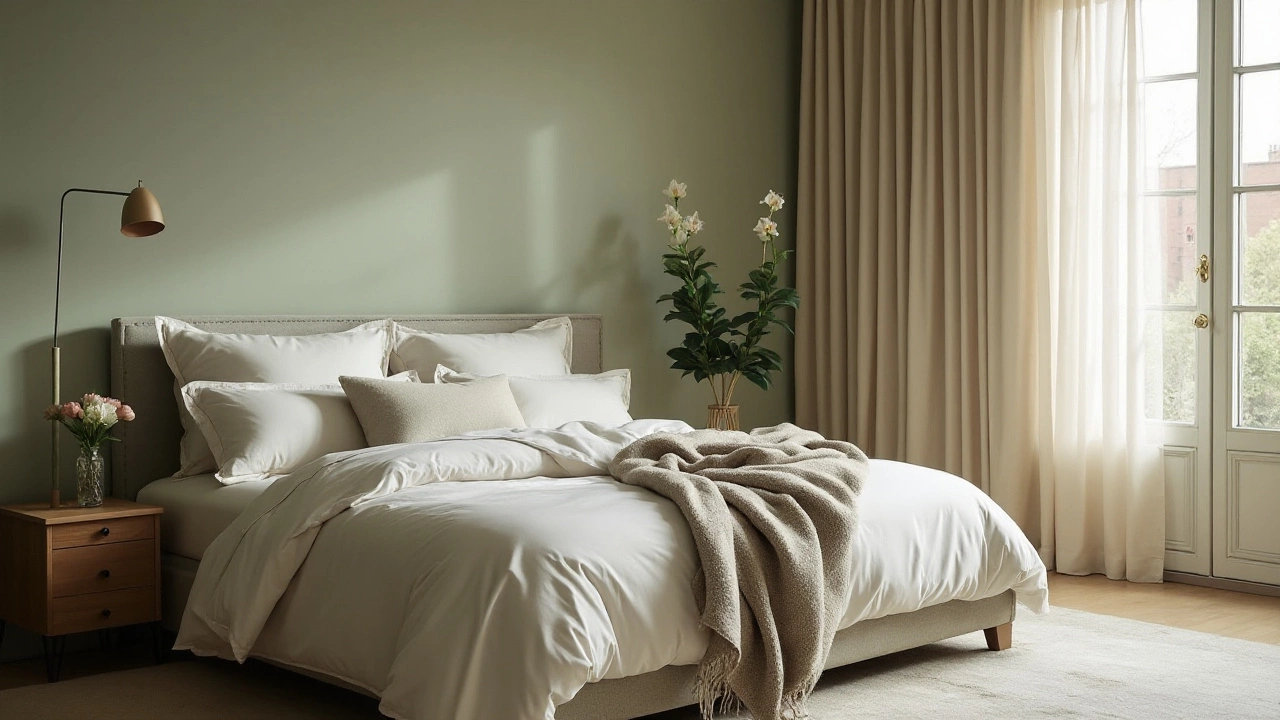
Tips to Adopt Luxury Minimalism
Embracing luxury minimalism requires a thoughtful approach to curating your surroundings. It's all about making intentional decisions that reflect both simplicity and opulence. Start by evaluating your current possessions. Focus on keeping items that serve a purpose or bring you genuine joy. The goal is to reduce excess while enhancing your environment's quality and feel. This journey isn't about deprivation but about being mindful of what truly adds value to your life. Consider subscribing to the principle of 'less but better.'
Investing in a few high-quality pieces can transform the way you live and experience your home. When choosing furniture, opt for classics that boast timeless design and exceptional craftsmanship. Think about materials like real wood, marble, or leather that not only look sophisticated but age gracefully. Remember, the fewer items you have, the more each piece stands out. A tip from renowned designer Calvin Klein is to 'stick to neutrals when integrating luxury and minimalistic tastes,' thereby creating a serene and cohesive look.
Minimal yet luxurious does not mean your home has to lose its personal touch. Rather, it should reflect your personality through select elements. Curate your décor with meaningful art pieces or heirlooms that tell a story or have sentimental value. A famous quote from architect Ludwig Mies van der Rohe highlights this notion:
"Less is more."These words remind us of the beauty in simplicity and the importance of selecting each item with care.
Explore the use of materials and textures to add depth and interest without causing visual clutter. Soft, quality textiles like silk, wool, or cashmere can offer both comfort and elegance. Incorporating mirrors or metallic accents can amplify light and give a sophisticated shine to your interiors. Lighting is another key aspect to consider; invest in a few beautiful fixtures that enhance the ambiance and intrigue of your space.
Simple living goes hand in hand with being organized. Maintain clarity by designating specific places for each of your belongings. Adopting efficient storage solutions keeps your environment clean and visually pleasant. Also, remember to regularly reassess your collection and make necessary adjustments. The essence of minimalism is to be adaptable and flexible, recognizing when change is needed to maintain harmony within your home.
Embrace a lifestyle that favors quality over quantity, allowing you to live with only the things that matter most. By doing so, you not only create a luxurious and serene environment but also cultivate a deeper appreciation for the spaces you inhabit every day.

